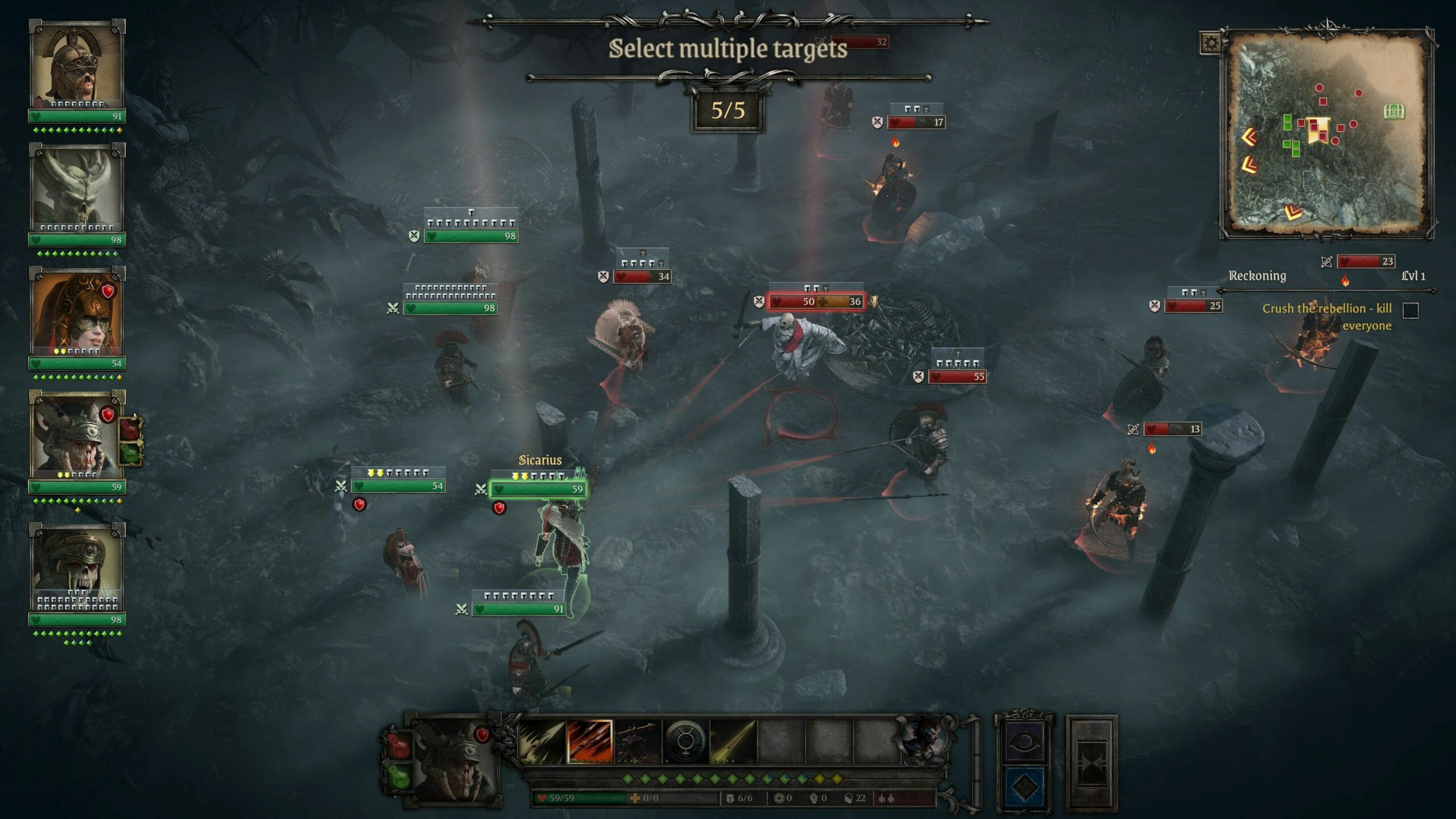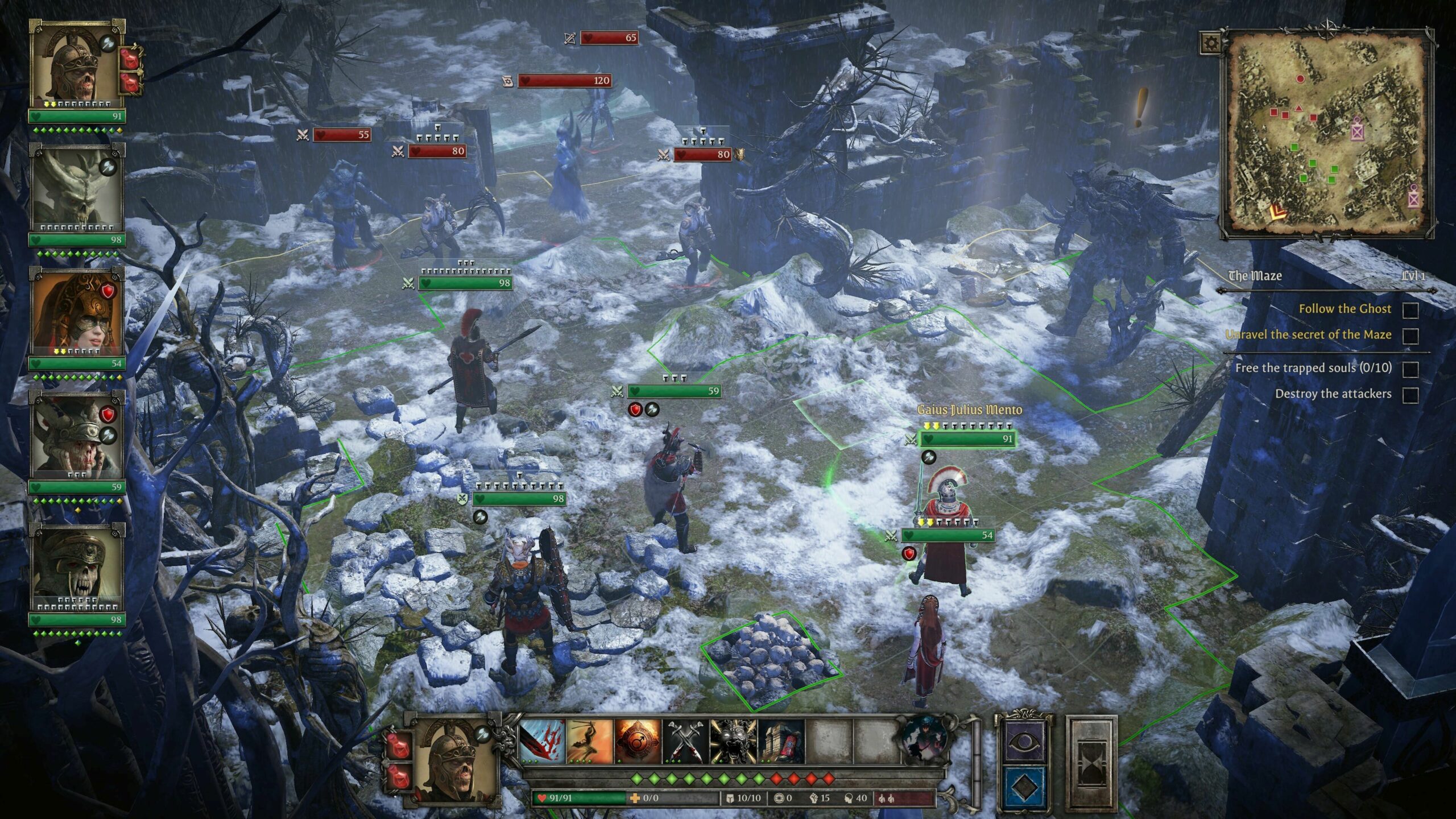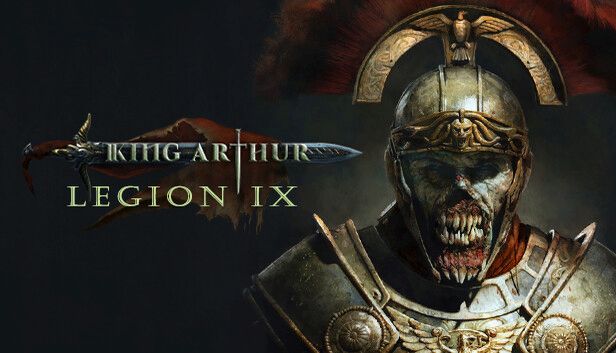King Arthur: Legion IX Review
For a largely mythical time, place, and character, King Arthur and his court at Avalon have sure generated a lot of books, movies, and stories. It’s not hard to understand why. You’ve got intrigue, magic, knights, and a tenuous connection to actual history. Heck, I’ve been to Tintagel in Cornwall and it’s easy to imagine King Arthur striding through the ruined stone structure. However, the armies of Avalon warring with zombie Roman soldiers was not on my bingo card until I played King Arthur: Legion IX.
Take Your Turn
Legion IX occupies a middle ground between standalone DLC and a full-on sequel to Neocore’s King Arthur: Knight’s Tale. The first game leaned hard into the more arcane aspects of the Arthurian myth. Legion IX takes it even further, with Avalon defending itself against an army of undead Roman warriors. You play as Gaius Julius Mento, who leads a legion of demonic soldiers who recently escaped from the underworld to Avalon. You find the remnants of a Roman colony called Nova Roma and one of your tasks is to rebuild the settlement. Legion IX divides its campaign gameplay into simplified base building, exploration, gathering, and turn-based combat. If you played King Arthur: Knight’s Tale, you’ll be well prepared. If you didn’t, brace yourself for a learning curve and some trial and error.
Unlike some games in this genre, you don’t swap party members in and out but level up a consistent squad of up to six heroes, each with various loads out and utilities in combat. There’s no permadeath for your party members. If they die, they simply re-animate after the battle. One of the best and most rewarding aspects of Legion IX is the leveling and abilities system. Each hero has six active skills, nine passive skills, and a special skill, so there’s a ton of build variety to play with.

Once in combat, Legion IX plays like many similar, grid-based CRPGs. You have movement and action points, though AP can be used for positioning as well. You move all your players during each turn, then the enemy moves. There are several difficulty options, but even at a moderate level, there’s quite a challenge.
Outside of Combat
Combat is the crunchy core of Legion IX. In addition to building up Nova Roma with typical support structures that you’ll use to upgrade gear or your team, the campaign’s narrative takes place on an overworld map, where you pick the next mission. There are occasional branching choices but by and large, the campaign is pretty linear. The base game had a pretty nuanced morality system. In contrast, choices in Legion IX come down to good versus evil. Once in the field, your party will explore, solve some environmental puzzles, search for treasure, and engage in combat, often against much larger forces than your own. The good news is that those large enemy groups are often padded out by expendable, easily dispatched demon soldiers.
\
The mission maps themselves are compact but full of little secrets and hidden loot. The battles themselves move quickly and, as long as your party isn’t completely wiped, even a last-man-standing victory levels everyone up. The environments themselves are a bit visually drab, desaturated, and generic, but do offer a lot of options in terms of party placement. Like the best tactical turn-based games, Legion IX requires a fair amount of planning and smart battlefield awareness.
While combat and characters are engaging, the game’s writing and voice acting are pretty disappointing. The cutscenes are well done and voice-acted, but in-game, things are much less impressive. Especially weird is the use of current slang, voiced by generic-sounding actors. It completely ruins the sense of historical time and place. It almost ventures into “so bad, it’s funny” territory. Alas, it doesn’t reach that critical mass and is just distracting.
Take Up Arms
Outside of the script and acting, Legion IX has effective music and audio design. Weapon sounds are crunchy and the music is appropriately styled for the heroic-demonic-magical setting. The game has an admirably large number of difficulty, accessibility, and performance settings. Aside from some pretty long initial load times and a bit of hesitation around response to commands, the game ran well.

Overall, fans of King Arthur: Knight’s Tale will enjoy this DLC expansion. Newcomers starting with Legion IX will need some onboarding. The game’s core combat remains challenging, interesting, and fun, even if the narrative and writing are disappointing. As a fan of Arthurian legends and history — and more importantly, tactical turn-based RPGs — I had a good time on the battlefields of Avalon.
***PC code provided by the publisher for review***
The Good
- Enjoyable, challenging combat
- Interesting setting
- Doesn’t require base game
- Good value
The Bad
- Disappointing writing and acting
- Opaque for newcomers
- Some mechanics watered down

